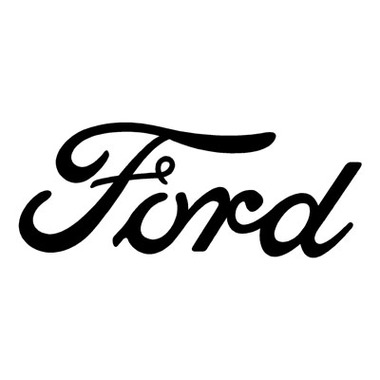 Ford Kuga Service ManualPaint - General Information » Color Identification and Chromatics
Ford Kuga Service ManualPaint - General Information » Color Identification and Chromatics
Metallic and pearl pigments
Metallic and pearl pigments
Colored paints achieve their color effect by the addition of pigments. Pigments are colored, solid, very fine organic and inorganic particles which are insoluble in the binding material.
Metallic pigments
Aluminum platelets are added as pigment to form metallic paint.

Depending on the size and shape of the aluminum platelets, different metallic effects can be achieved:
- Cornflake aluminum (1) causes very strong dispersion because of rough edges, low brilliance, very low flop and produces grey-silver shades.
- Dollar aluminum (2) causes hardly any dispersion because of the smooth surface, high brilliance, produces very light, almost white silver shades.
With metallic paints however, only a light-dark light reflection effect occurs.
Colored metallic paints are produced by the extra addition of color pigments to the metallic paint.
Pearl pigments

The basis of pearl pigments is formed by mica, which is metallized with a silver or gold layer.
Depending on the angles of light and observation, the mica platelets reflect different proportions of light. Because of this, the color of the paint appears to the observer to change.
Pearl pigments produce a colored and light-dark reflected light effect.
Basic color theory
Metallic and pearl pigments
Color codes and their determination on Ford vehicles
Matching tinted filler to the color code
Ford Kuga Service Manual
- General Information
- Jacking and Lifting
- Noise, Vibration and Harshness
- Suspension System - General Information
- Climate Control
- Auxiliary Climate Control
- Instrument Cluster and Panel Illumination
- Instrument Cluster
- Horn
- Warning Devices
- Parking Aid
- Charging System - General Information
- Battery, Mounting and Cables
- Generator and Regulator
- Voltage Converter/Inverter
- Information and Entertainment System - General Information
- Information and Entertainment System
- Exterior Lighting
- Interior Lighting
- Daytime Running Lamps (DRL)
- Module Communications Network
- Module Configuration
- Wiring Harnesses
- Anti-Theft - Active
- Anti-Theft - Passive
- Multifunction Electronic Modules
- Front End Body Panels
- Body Closures
- Interior Trim and Ornamentation
- Exterior Trim and Ornamentation
- Rear View Mirrors
- Seating
- Glass, Frames and Mechanisms
- Instrument Panel and Console
- Handles, Locks, Latches and Entry Systems
- Wipers and Washers
- Bumpers
- Safety Belt System
- Supplemental Restraint System
- Body Repairs - General Information
- Body Repairs - Vehicle Specific Information and Tolerance Checks
- Front End Sheet Metal Repairs
- Roof Sheet Metal Repairs
- Side Panel Sheet Metal Repairs
- Rear End Sheet Metal Repairs
- Paint - General Information
- Uni-Body, Subframe and Mounting System
- Suspension System - General Information
- Front Suspension
- Rear Suspension
- Wheels and Tires
- Driveshaft
- Rear Drive Axle/Differential
- Front Drive Halfshafts
- Rear Drive Halfshafts
- Brake System - General Information
- Front Disc Brake
- Rear Disc Brake
- Parking Brake and Actuation
- Hydraulic Brake Actuation
- Power Brake Actuation
- Anti-Lock Control
- Anti-Lock Control - Stability Assist
- Steering System - General Information
- Power Steering
- Steering Linkage
- Steering Column
- Steering Column Switches
- Engine System - General Information
- Engine- 2.5L Duratec (147kW/200PS) - VI5
- Engine Cooling
- Fuel Charging and Controls-2.5L Duratec (147kW/200PS) - VI5
- Fuel Charging and Controls - Turbocharger- 2.5L Duratec (147kW/200PS) - VI5
- Accessory Drive - 2.5L Duratec (147kW/200PS) - VI5
- Starting System- 2.5L Duratec (147kW/200PS) - VI5
- Engine Ignition - 2.5L Duratec (147kW/200PS) - VI5
- Engine Emission Control - 2.5L Duratec (147kW/200PS) - VI5
- Intake Air Distribution and Filtering - 2.5L Duratec (147kW/200PS) - VI5
- Evaporative Emissions
- Electronic Engine Controls
- Automatic Transmission/Transaxle
- Transmission/Transaxle Cooling
- Automatic Transmission/Transaxle External Controls
- Transfer Case
- Exhaust System-
- Fuel System
- Fuel Tank and Lines
- Acceleration Control
- Speed Control
- Climate Control System
- Climate Control
Main Categories
0.0149
